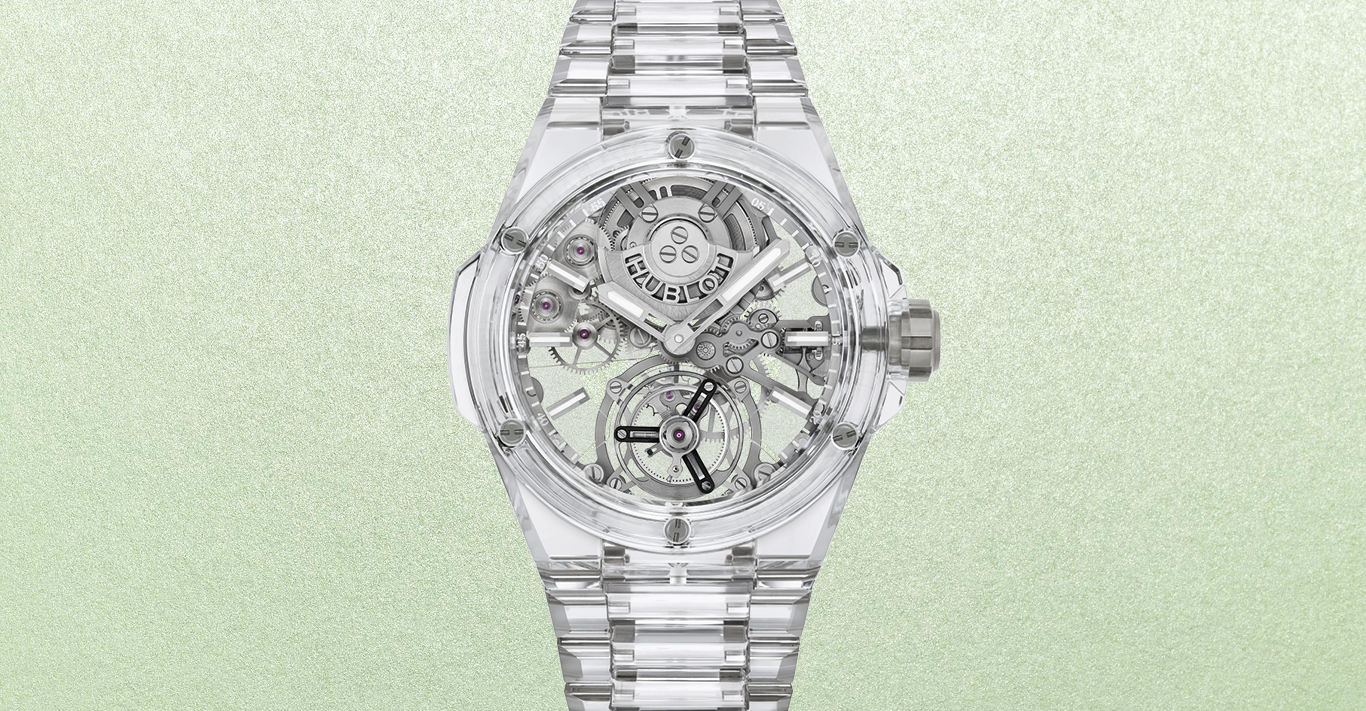WORDS
Eleanor Pryor
Skeletonised watches are prized in watchmaking, not only for the technical complexity in stripping away the watch’s components to allow for maximal display of the movement, but for the magical quality in watching its inner workings in motion. While Hublot’s examples are already some of the most innovative on the market, the watchmaker has taken it a step further with the launch of the Big Bang Integral Tourbillon Full Sapphire.
This model builds on the legacy of its Big Bang Unico Sapphire, which made waves in 2016 as the first sapphire watch. With this new piece Hublot has not only crafted a case from transparent sapphire, but also an integrated bracelet made from the tricky material. The latter alone was a challenge for the brand’s engineers, comprising 165 parts, 22 of which are sapphire, each undergoing its own industrial process to create a strap that was supple, fluid and comfortable.
The captivatingly clear case allows for almost perfect viewing of the in-house HUB6035 calibre within. On display is the micro-rotor at 12 o’clock and the tourbillon at 6 o’clock, while the transparent sapphire bridges and main plates have been painstakingly reworked to give the illusion of being suspended in space.
‘For such an exceptional creation, we opted for the new Automatic Tourbillon calibre with its sapphire bridges, the transparency of which creates a stunning spectacle,’ explains Hublot CEO Ricardo Guadalupe. ‘The act of creating an integrated case and bracelet from sapphire was, however, deemed impossible. But we were the first brand to gain perfect mastery of sapphire, industrialising it and making it reproducible in series production. It took us five years to bring our first sapphire cases to life – and almost as long for the bracelet. Producing both from sapphire and integrating them together is the pinnacle of the in-depth work undertaken by all of Hublot’s teams. We are proud to be the ones writing the first lines in this new chapter in the history of materials.’




